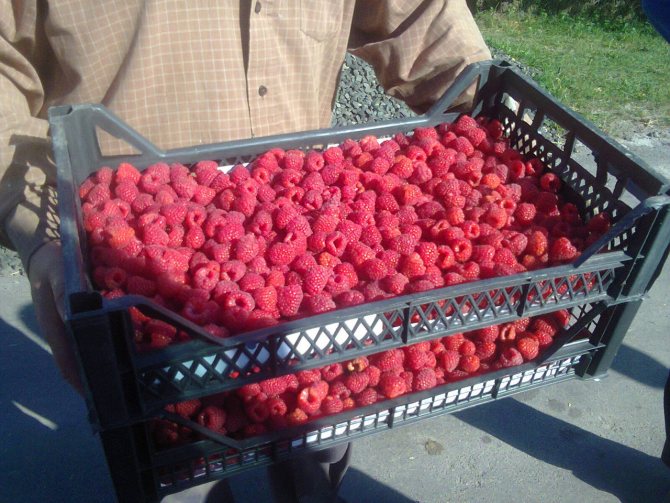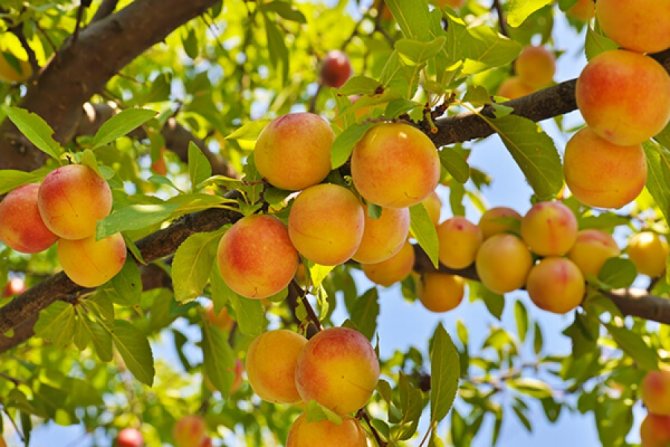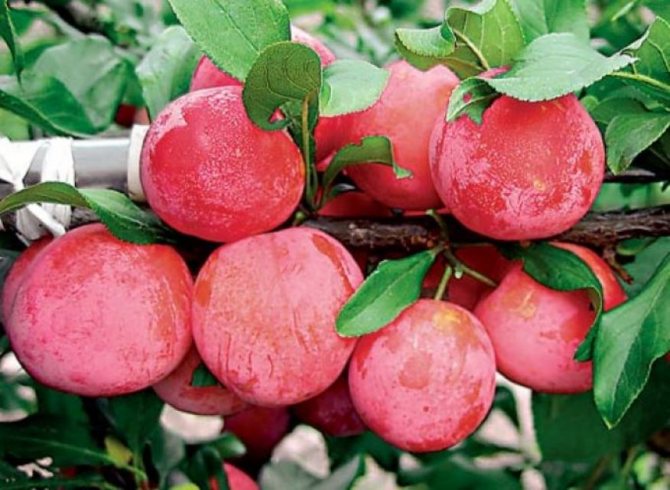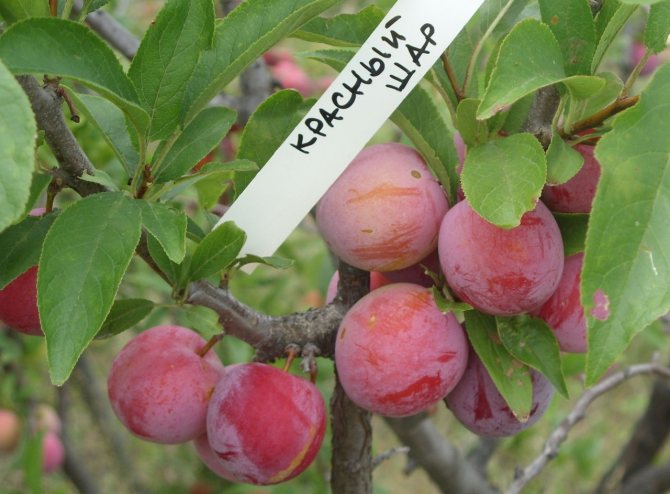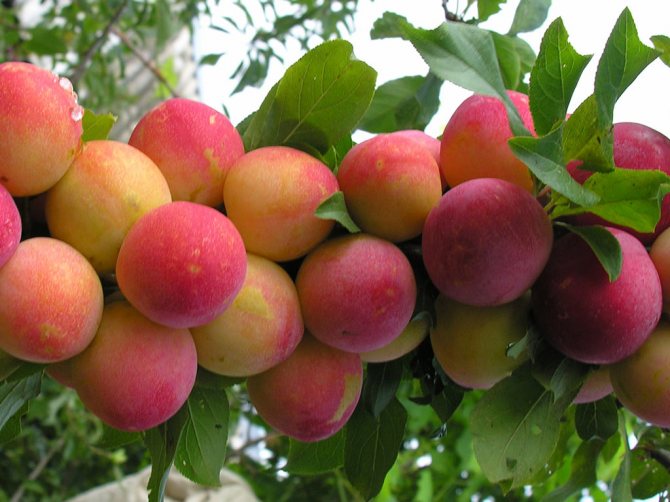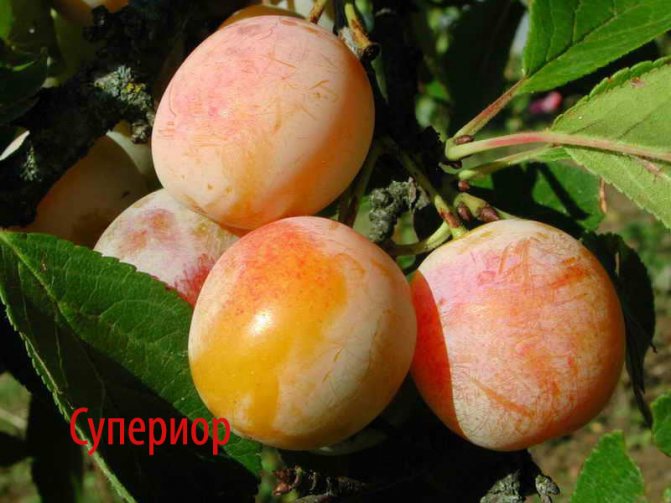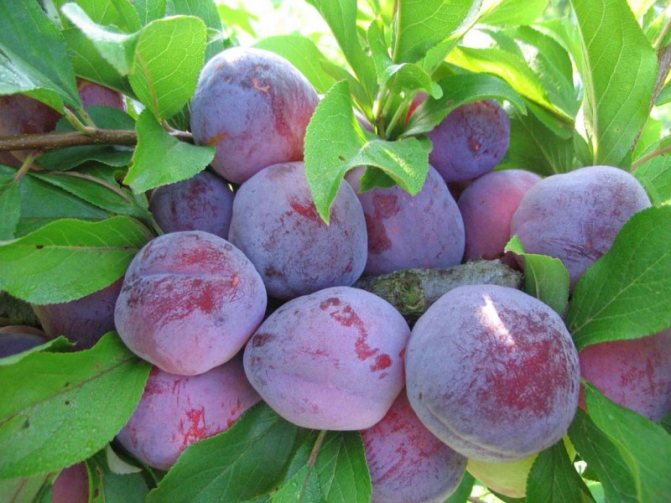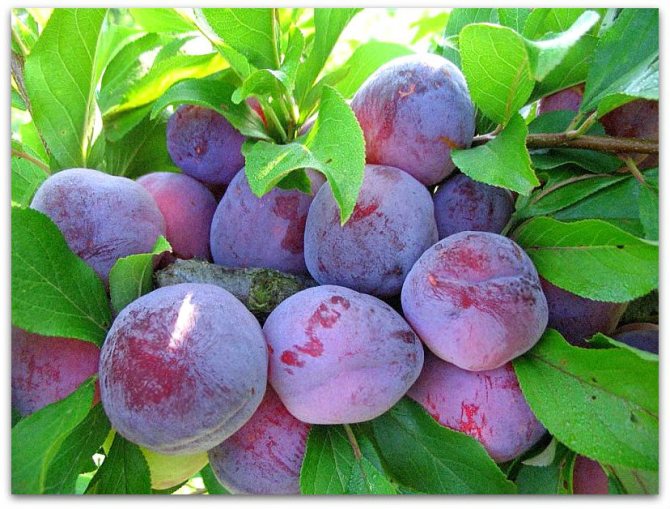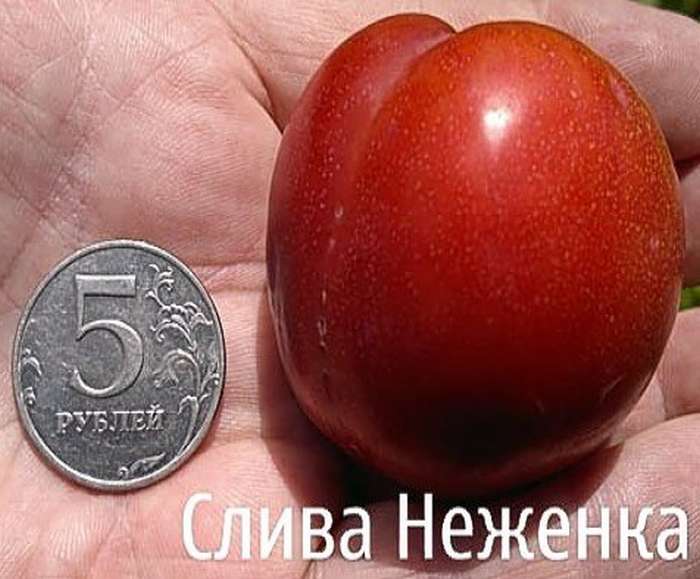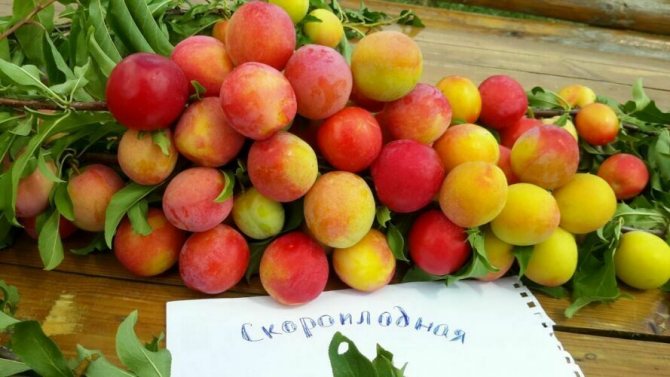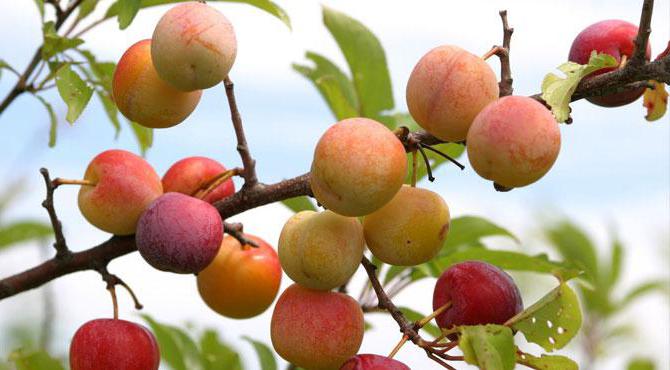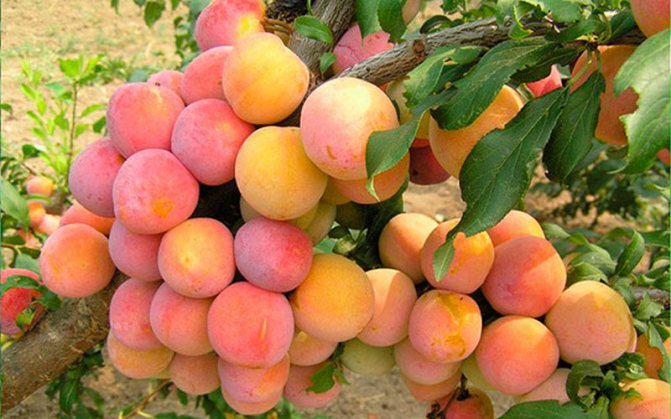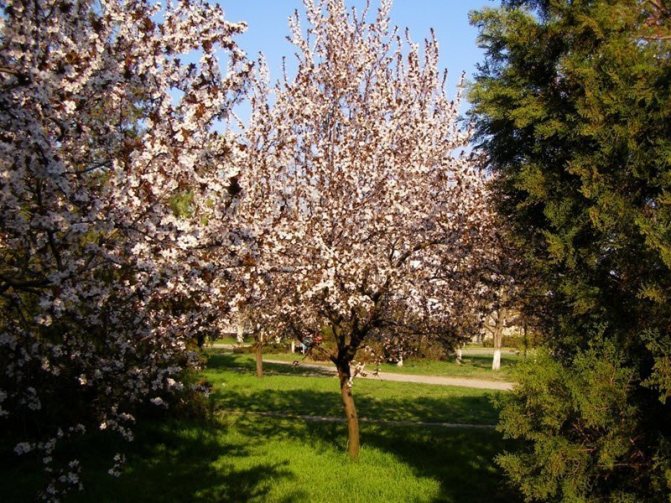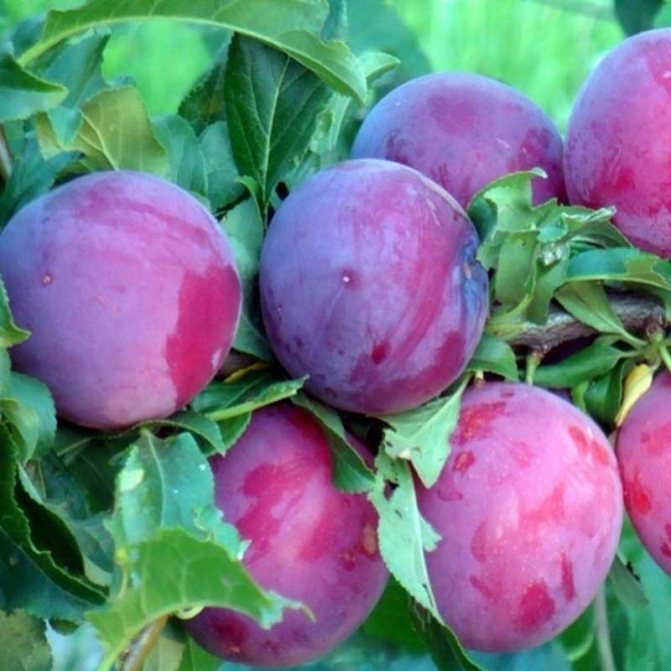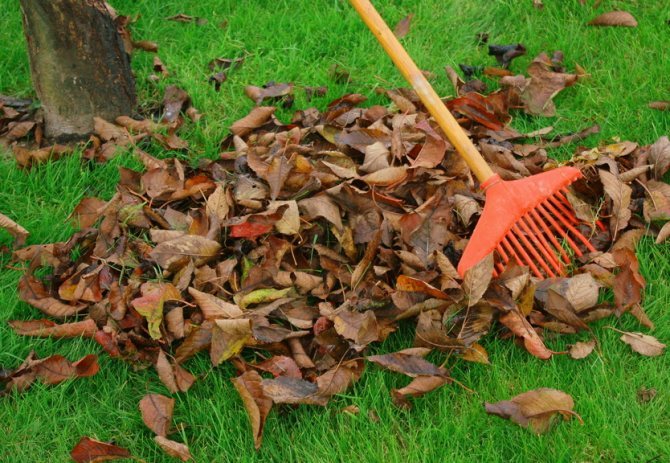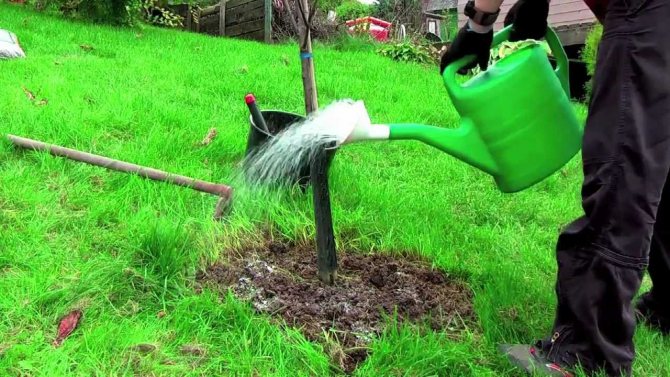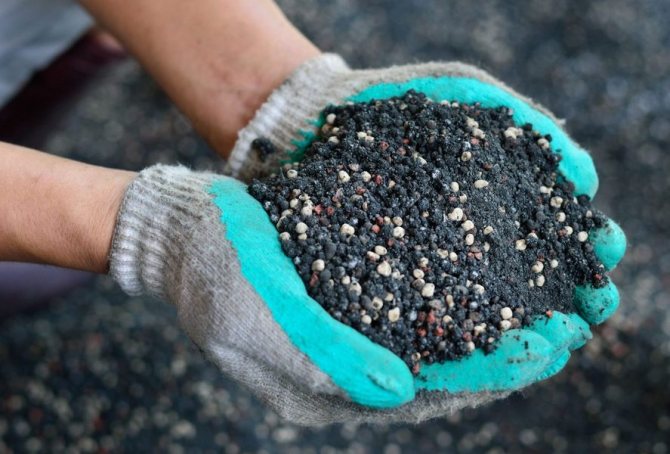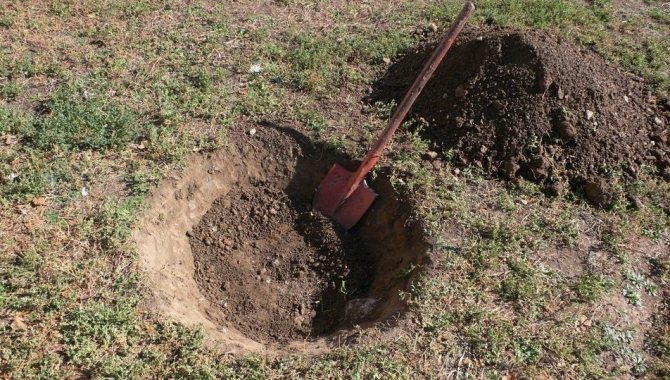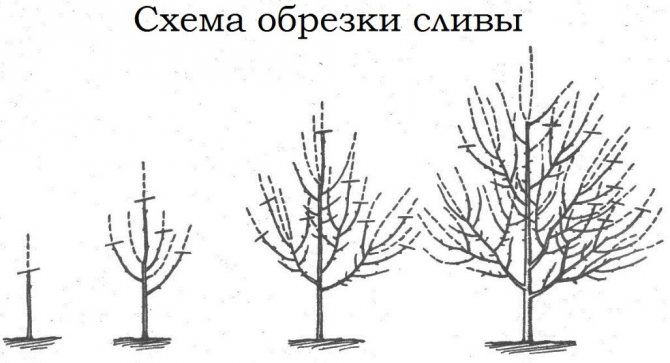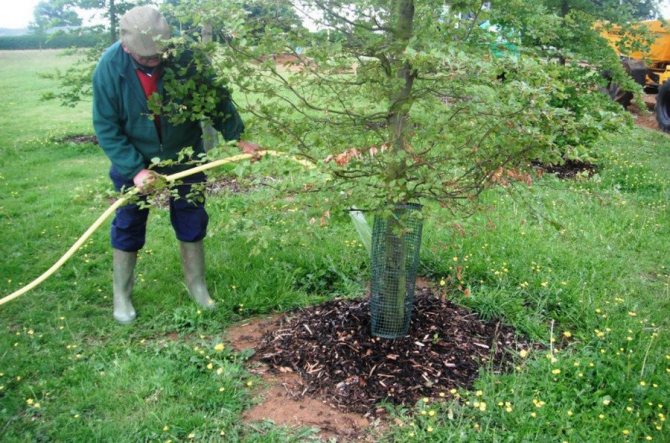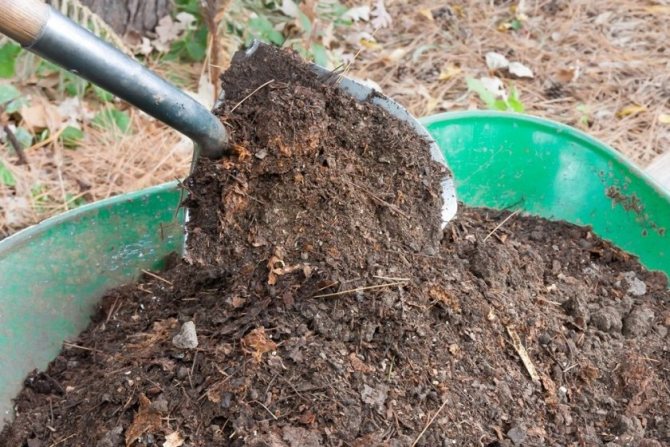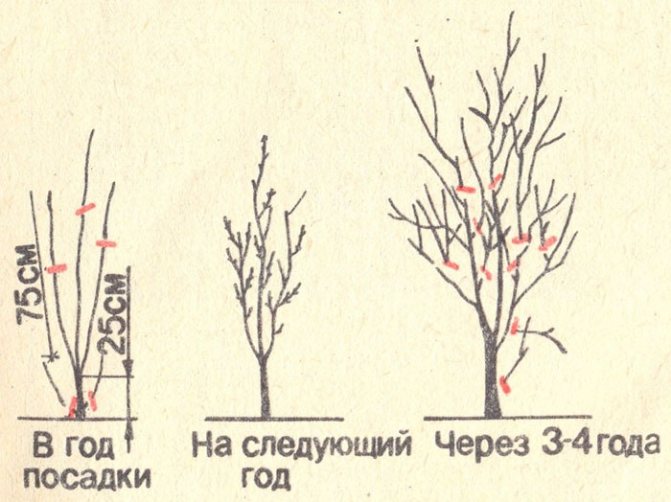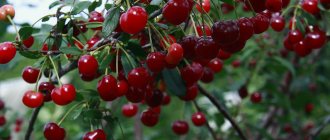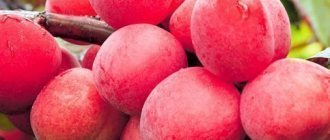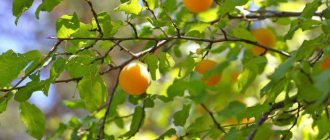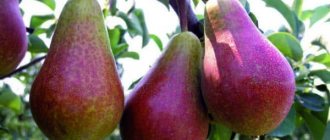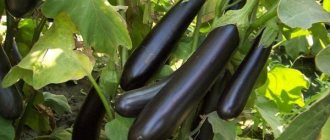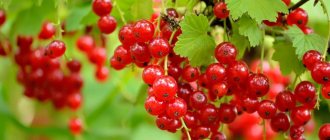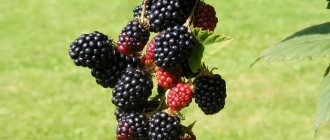Features of the Chinese plum
Depending on the varieties, Chinese plums can be grown in almost all climatic zones of Russia. It can be planted together with existing plum and other fruit trees. The Chinese plum, as a rule, does not grow more than two meters. The crown is spherical and spreading, and the leaves are oval.
Plum blossom can amaze the imagination with its amazing beauty. Even before the first leaves appear, flowers bloom on all branches of the tree. However, this process does not last long, the Chinese plum quickly fades.
Abundant flowering does not bode well for a good harvest - the plum begins to bloom in early spring and the likelihood of pollination during this period is low due to windy and cool weather, and sometimes frost.

The beauty of the plum blossom is mesmerizing
Features of culture
The key features of the variety include:
- Due to its winter hardiness, it can be grown both in the central and slightly more northern regions of Russia - both the tree itself and the buds tolerate frost well.
- The "Orlovskaya Dream" has a high yield, however, with a large amount of harvest, the fruits may shrink.
- It is resistant to clasterosporium disease, and it should be treated in a timely manner against pests and other fruit diseases.
- Differs in early maturity, while the fruits tolerate transportation well.
Advantages and disadvantages
The main advantage of the variety is increased winter hardiness and high productivity. Unfortunately, this can also be a significant disadvantage.
In regions with an arid or extremely humid climate, the plum can die. Most often, the death of a plant occurs as a result of rotting roots.
Chinese plum - not only fruit, but also ornamental plant... During the flowering period, plum trees become a real decoration of any garden, therefore they can often be found in this very capacity.
In addition, many varieties of plums cannot pollinate themselves, bloom early, their root collar is quickly damaged.
Features of agricultural technology
Basically, the cultivation of ordinary and Chinese plums does not have significant differences, but in order to prolong the fruiting period of trees, the gardener needs to know several features.
Planting seedlings: site selection and soil preparation
- The area chosen for the cultivation of plums should be well lit by the sun and protected from winds.
- When choosing a site for planting, it should be borne in mind that all varieties are self-fertile or partially self-fertile. For good fruiting, it is necessary to plant several varieties on the site (at least three). Pollinating varieties are recommended to be selected according to flowering time. You can plant not only different plums, but also Russian plum (hybrid cherry plum), as well as common cherry plum. A distance of three meters must be left between the seedlings.
- The soil for planting should be neutral. If the soil on the site is acidic, then the soil must be deoxidized by adding dolomite flour and wood ash to it.
- The size of the planting hole should be 70 cm in diameter and 50 cm in depth. At the bottom, it is recommended to arrange drainage from expanded clay, broken brick or crushed stone.
- Humus or peat must be added to the pit. Fertilizers that were added to the soil when planting a seedling will last for about three years.Subsequently, the Chinese plum will need to be fertilized with humus with the addition of superphostphat and potassium sulfate.
Features of caring for a "Chinese woman"
- The approximate watering rate is 10 l / m². The wetted area must match the crown projection.
- The branches of the tree are thin enough that they can break under the weight of the fruit. Take care of the supports. These can be boards that can be substituted under the fruiting branches.
- Prune annually. Cut out any frozen and dried branches in the spring. thin out the crown when it thickens strongly. this will help increase the yield.
Wintering nuances
- Most varieties of Chinese plum are frost-resistant, while some can withstand cold temperatures down to -50 oC. But it is still better to prepare trees for wintering so that there are no unpleasant surprises in the spring.
- With the establishment of negative temperatures in November, wrap the plum trunk with a special covering material.
- Shake the snow off the tree; under its weight, the thin branches of the Chinese plum can break.
- The root collar of a Chinese plum is prone to under-warming, therefore, with the onset of a thaw, shovel snow from the trunk.
- Chinese plums do not tolerate stagnant water. In the spring, make grooves near the trunk circle to allow excess moisture to drain out.
Description of varieties of Chinese plum
This plant is distinguished by an abundance of varieties. The most famous are:
- Alyonushka;
- Manchu beauty;
- Oryol dream;
- Red ball;
- Oryol Souvenir;
- Sissy;
- Golden ball;
- Fast-growing;
- Superior.
Alyonushka
The plum tree variety Alyonushka was obtained due to the cross-pollination of a Chinese seedling and a Red ball. The tree grows a little over 2 meters tall. The fruit has a traditional plum lilac-burgundy color and sweet-sour taste. The stone is small and easily separated from the pulp - this gives the variety a special appeal in the eyes of gardeners who make homemade preparations for the winter. When separated from the stalk, the fruit is also not injured. A tree can be harvested about 20 kg.
Alyonushka's fruits ripen in the middle of the last month of summer.
In addition to cherry plum, Skoroplodnaya can act as a pollinator. Any other common or Chinese plum that has the same flowering period is also suitable. The plum variety Alyonushka can withstand frosts down to -30 ° C. The tree suffers from aphids, which for some reason distinguishes this particular species.
Disadvantages:
- very susceptible to damage by aphids;
- does not pollinate on its own.
Advantages:
- frost resistance;
- average yield;
- large fruits (weighing up to 35 g);
- on a five-point scale, the taste of the fruit is estimated at 4.2 points.
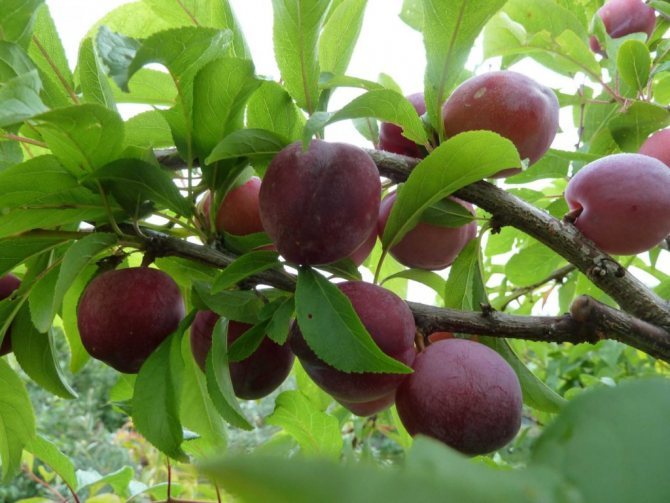

Plum varieties for the Moscow region and the middle zone
When choosing a variety of plums for planting in areas of the Moscow region and the middle lane, preference should be given to varieties with high frost resistance and resistance to diseases and pests. It is also advisable to choose varieties of plums with an early ripening period, so that the harvest has time to ripen before the autumn frosts.
"Rapid"
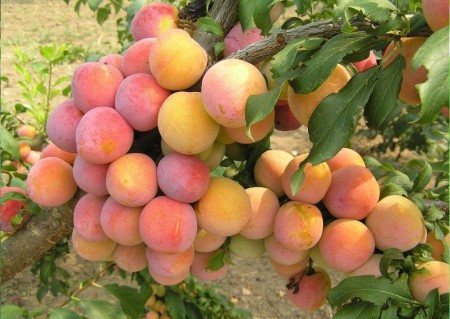

"Fast-growing" is one of the most popular varieties of plum for the Moscow region and central Russia, early ripening and fruitful. Self-infertile species. For cross-pollination, a hybrid cherry plum, "Red Ball", is suitable.
- Productivity 30 kg per tree.
- Reddish cream with yellow sweet flesh weighing 30 g.
- The tree is undersized about 2.5 m with a fan-shaped thin crown.
- The time for fruit ripening is the first half of August.
- The first harvest can be obtained already in the third year after planting the seedling.
- It tolerates severe frosts down to -40, suitable for growing in the Moscow region and the middle lane.
- It is slightly damaged by diseases and pests.
Advantages of the view: tasty fruits, drought-resistant, excellent frost resistance, early maturity
Minuses: self-infertility, poor separation of the bone from the pulp.
"Yakhontovaya"
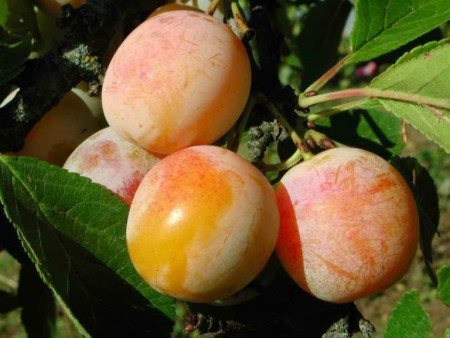

"Yakhontovaya" is an early ripe fruitful type of plum, partially self-fertile. To obtain bountiful harvests in the neighborhood, we need varieties for cross-pollination: “Skorospelka krasnaya”, “Hungarian Moscow” or “Memory of Timiryazev”.
- The harvest is 30 kg per tree.
- Yellow cream with a wax coating 30-35 g with sweet and sour juicy pulp.
- The tree is of strong growth up to 5 m, the crown is neat spherical.
- Ripening of the crop by mid-August.
- Harvesting begins in the third or fourth year after planting.
- It tolerates frost perfectly, flower buds are resistant to spring frosts. The variety is zoned for the Moscow region and the middle zone.
- Satisfactory disease resistance.
Advantages of the view: early maturity, early ripening, frost resistance, easy separation of the bone from the pulp, fruits of excellent dessert taste.
Minuses: high tree height, partial self-fertility.
"Smolinka"
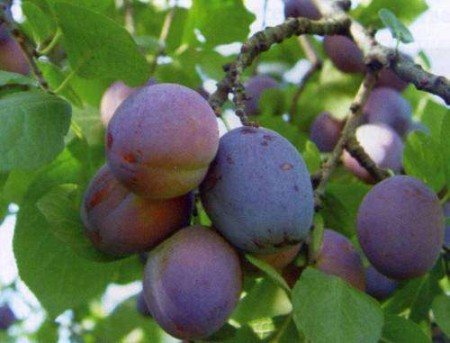

"Smolinka" is a precocious fruitful type of plum. The fruits of excellent taste are used fresh and for freezing, drying and preparing prunes.
- Productivity 15-20 kg per tree.
- Dark purple cream weighing 35-40 g with sweet and sour tender pulp.
- Tall trees (5-5.5 m) with a thin crown.
- The harvest ripens in the second half of August.
- Plum begins to bear fruit in the fourth or fifth year of growth.
- Average winter hardiness, but sufficient for the conditions of the Moscow region and the middle zone. Branches quickly recover after freezing.
- With good care, resistance to major diseases is decent.
Advantages of the view: large fruits of high quality, good transportability.
Minuses: high growth of trees, self-fertile, branches without support can break under the weight of the fruit.
"Red ball"
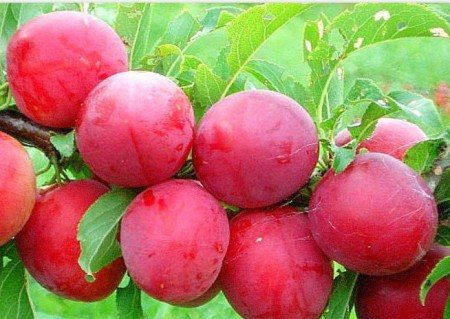

"Red ball" with an early ripening period and excellent frost resistance. This variety is partially self-fertile; to obtain decent yields, pollinators are needed in the neighborhood, for example, "Skoroplodnaya" or hybrid cherry plum.
- Productivity 18 kg per tree. Red cream with a waxy coating weighing up to 40 g. The pulp is yellow, juicy, sweet and sour in taste.
- The tree is not tall (about 2.5 m) with a rounded drooping crown.
- The fruits ripen by mid-August.
- Fruiting begins in the third year after planting.
- It perfectly tolerates severe frosts, but does not like thaws, after which it can freeze slightly. Recommended for planting in the Moscow region and the middle lane.
- It is practically not damaged by clasterosporium, but protection is needed from other diseases.
Advantages of the view: large tasty fruits, undersized trees, early maturity, high frost resistance, good transportability.
Minuses: during early flowering, damage by spring frosts is possible, partial self-fertility.
History of creation
The Oryol Dream has not yet achieved the same popularity as the Chinese Lychee plum. Nevertheless, this variety is quite worthy of the attention of gardeners. The variety was obtained through the selection of seedlings of another Chinese culture called Alenushka, after free pollination. The culture was bred in the All-Russian Research Institute of Selection of Cultures. Plum was included in the State Register for the Central Black Earth Region.
Oryol Dream is a variety of dining purposes. Due to its excellent taste characteristics, Orlovskaya Dream can be eaten both fresh and processed. Often, it is from this variety that such dried fruit as prunes are harvested.
Origin of the variety
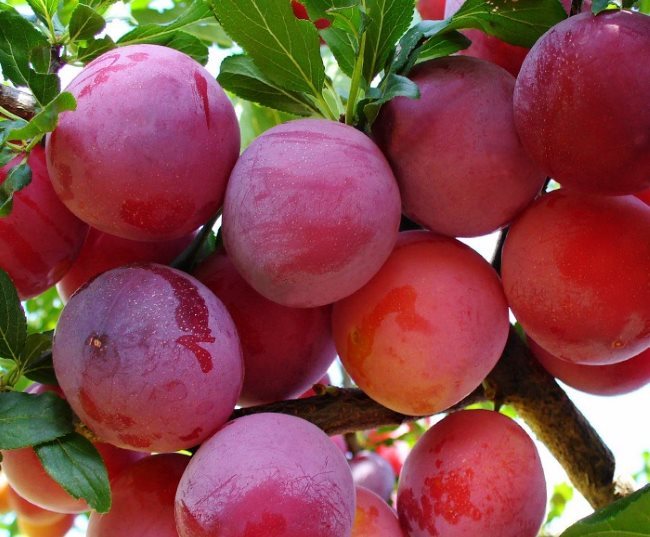

The variety was bred by domestic breeders on the basis of Chinese plums.
To breed the Nezhenka variety, two types of Chinese plums were used:
- plum, characterized by high winter hardiness and early maturity, originating from the Chinese plum of American selection;
- Chinese womancharacterized by large fruits and fast fruiting.
In 1997 the resulting plum was sent for variety testing. In 2010 year the new variety was added to the State Register.
Trees are zoned in the Central Black Earth Region.
Planting a Chinese woman in the garden
In general terms, the care and planting of the Chinese plum does not differ significantly from the traditional varieties, however, some points should be taken into account in order to increase the yield and extend the life of the plum tree.
Nuances you need to know when planting a Chinese plum
It is better to plant the Chinese plum in the fall, since its root system adapts better in the winter. Before planting, the soil must be prepared. Two days before planting the seedling, dig up the ground and treat the soil with dolomite flour (add 700 g per square meter). Due to dolomite flour, the acidity of the soil will decrease. The hole for the future plum must be formed at least 18 days before planting the tree. Make a square hole measuring about 70 by 70 cm, about 60 cm deep.
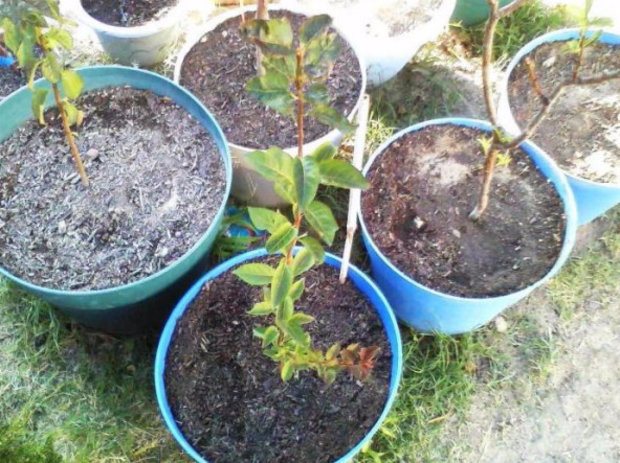

Chinese plum seedlings must be at least one year old
When planting plum seedlings, it is advisable to adhere to the following procedure:
- Before planting a seedling, it must be cleaned of dried branches and roots. Then soak the roots in the clay solution for at least one hour. When preparing the solution, clay can be combined with Epin, which will stimulate the growth and development of a young tree.
- At this time, the first 20 cm of soil (the most fertile layer) is taken out of the hole. It must be mixed in equal proportions with manure, compost, humus and peat. Set this mixture aside for now.
- At the bottom of the hole, form a bump of earth at a distance of 20 cm from the center and stick a peg into it. It should rise 70 cm above the ground. It is recommended to add an admixture of 50 g of potassium salt, 300 g of superphosphates and 10 liters of manure to the hole. The seedling is placed in the hole in such a way that the place where the root system passes into the trunk comes out of the hole by 7 cm. The roots located in the hole must be well spread.
- The hole is filled up to half, the soil is tamped and filled with water (about a bucket will be required). After that, fill the hole with the rest of the soil and the deposited mixture, and form a hole with a diameter of 40 cm.Now you need to tie the drain to the peg and spill the earth with at least three more buckets of water.
- After the moisture has been absorbed, the surface around the tree is covered with sawdust (with a layer up to 5 cm high). This is to prevent water evaporation.
The first watering of plums after planting is carried out no earlier than two weeks later.
Planting and leaving
When planting this variety on your site, keep in mind that he likes:
- shine;
- soddy soil with sand and humus;
- high places.
It can kill your plum:
- waterlogging;
- warming up;
- wind;
- early flowering;
- no pollinator.
Landing:
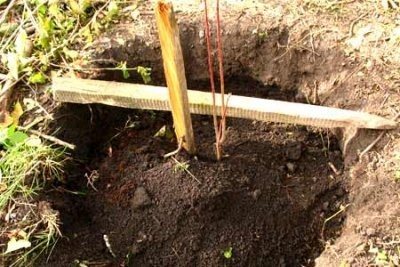

In the planting hole (it must be prepared in advance, at least 14 days before planting, or better - in the fall) 60 - 80 centimeters deep, 50 centimeters wide, pour a drainage layer of 20 centimeters: it can be crushed stone, expanded clay, shards of ceramic dishes.- Then fill in the soil mixture: add 2 parts of humus and 1 part of sand to 3 parts of sod land.
- Insert a stake into the center of the hole (this will help make the seedling stable).
- A seedling with a good root system (preferably at least 3 - 4 branches 40-50 centimeters long), carefully put into the depression, spreading the roots and gradually sprinkling it with a mixture of soil so that it fits snugly and does not break the roots, tie it to a peg.
- Add fertilizer, and then ordinary earth again, so as not to burn.
- Make sure the root collar protrudes 5-7 centimeters above the ground to avoid overheating.
- Ammonium nitrate, superphosphate, potassium chloride will help a young plant to take root.
- Water the tree well during the first year often, pouring at least a bucket of water.
Planting rules for seedlings
Plum prefers to grow on chernozem, forest, clay and gray soils with a neutral or alkaline environment and an increased amount of calcium. Groundwater should be located at least 1.5 meters to the surface.
The plum should be planted on a surface well-lit by the sun's rays. The tree does not like drafts, the best place for planting is in the hills. Planting is subject to healthy plants at the age of 1 year.
The planting hole is made large... It should hold up to 10 liters of rotted manure, 50 grams of potassium salt and 300 grams of superphosphates. To prevent rapid evaporation of moisture, the ground around the seedling is sprinkled with sawdust and peat.
Plum does not pollinate on its own, because the seedlings should be planted next to other trees, best of all next to the cherry plum.
Plum growing technique
Good tree growth and obtaining stable and bountiful yields are possible only with the correct selection of a site for growing, the choice of a high-quality seedling and adherence to planting technology.
Did you know? Previously, in the Czech Republic, a person who had committed a misdemeanor and repented of it, the priest could not forgive the sin until he dropped a plum on the side of the road.
Selection of soil and site
As we have already noted above, the Skoroplodnaya variety makes increased demands on soil fertility and its composition. The best soil for it is considered to be sandy loam soil, additionally enriched with minerals, with good moisture and air permeability.
When choosing a place for planting, you need to ensure that groundwater does not approach the soil surface closer than 1–2 m.
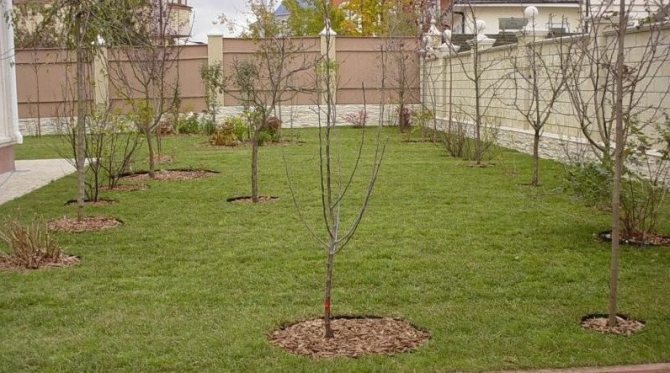

The site for planting must be well protected from the wind. As with all plum trees, for plants of this variety, it is necessary to choose an area located on a hill and sheltered from the winds from the north. A good drain will feel near the southern side of the building or a high fence.
Temperature, humidity and lighting
The plum tree loves warmth and good lighting.... The place where it grows must be constantly illuminated by the sun. It is allowed that a light shadow fell on the crown no longer than 2-3 hours a day. "Fast-growing" plum tolerates short-term drought well.
Early ripe varieties of plums also include:
Chinese plum care
The Chinese plum easily tolerates a short-term drought, however, in case of long-term heat, the plum must be watered periodically at the rate of one bucket per square meter of the projection of the crown of the tree. After irrigation, it is advisable to loosen the watered land area and cover it with sawdust or soil 5–7 cm high.
Top dressing of a tree
In the spring, during the period of active ripening of the Chinese plum, nitrogen fertilization of the soil is carried out in order to make it easier for the tree to give new shoots and ensure their vital activity. For the manufacture of fertilizer, 2 kg of mullein, 25 g of urea and 25 g of ammonium nitrate are bred in a bucket. This is calculated per square meter of land. The solution must be poured over the plum. In summer, plums are fertilized with ash - 200 g per square meter.
Pruning
The Chinese plum must be pruned for several purposes. The first pruning is carried out immediately after planting the seedling, which is shortened by almost half in order for the plum to better adapt to new conditions and start up new shoots. After that, plum branches are pruned in winter and early spring.
Video: spring pruning plum
Important! It is highly discouraged to prune Chinese plums if the air temperature is less than 15 ° C.
In the spring, it is advisable to prune, which will form a compact crown of the tree. To do this, you need to remove the shoots growing upward, and also cut off last year's branches in half. In addition, the crown should be thinned if it is too thick.
The cut off places are covered with garden pitch.
Wintering
Before the onset of the first frost, collect and burn the fallen plum leaves, dig up the ground near the trunk. An adult Chinese plum tree tolerates cold quite easily, while a young tree, which is 2-3 years old, must be wrapped in burlap. In this case, use only natural materials, otherwise the tree may rot or rot.
Diseases
The Chinese plum is resistant to diseases that affect many fruit trees, but it can be susceptible to moniliosis or clasterosporium disease. As a treatment for these diseases, the tree is treated with a 3% Bordeaux mixture. For prevention, plums can also be sprayed with such a solution, but 1%, and it is best to do this in the spring, before the flowering of the tree.
Care
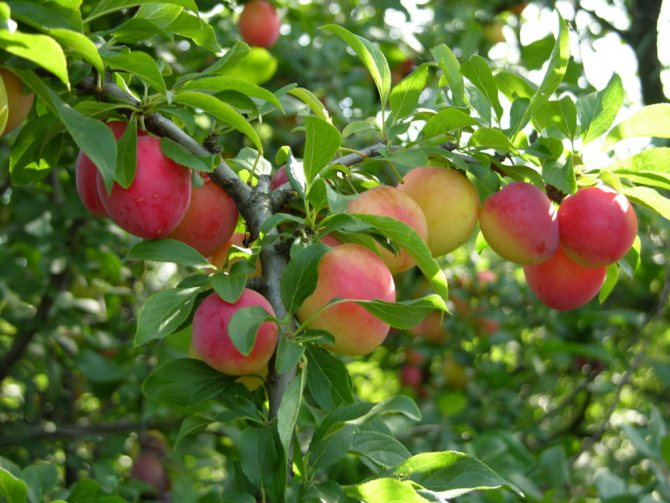

You will not have to make special efforts when growing the early-fruiting plum. But it is still worth following some rules:
- In the first year, regular watering is very important. Further, you can not get too hung up on this procedure, since droughts will not destroy the plants.
- The soil near the trunk circle is regularly loosened, while weeds are removed.
- After the beginning of fruiting, pruning must be performed to eliminate the risk of excessive thickening of the crown. This procedure is carried out in the spring, cutting out all the shoots that do not allow access to light inside the crown. Sanitary pruning of dry and damaged branches is carried out in autumn.
- Top dressing is carried out three times - in early May, after 15 days and in mid-June. Further fertilization can only cause harm, provoking the active development of green mass and branches and the risk of freezing due to unripe bark. The optimal feeding method is a solution of ammonium nitrate, prepared in a proportion of 60-90 g of powder per 10 liters of water.
- The near-trunk zone is mulched after watering.
Diseases and pests
Plum is practically not afraid of pests, it is not afraid of diseases either., which often affect fruit trees.
The greatest threat to the tree is plum moth... The pest affects the fruits and leaves of the plant.
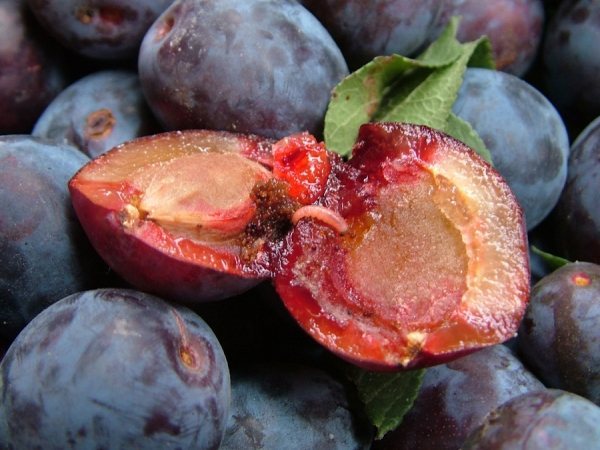

The greatest threat to the Chinese plum variety is the plum moth
The fight against it begins during the flowering period. and stops about 1 month before the planned harvest. Pheramone traps and spraying the tree with chemicals are effective means of control. Spraying is done every 2 weeks.
Plum fruit "red ball"
They ripen in mid-August, as this plum starts flowering earlier than other varieties of the crop. The shape of the fruit lives up to the name. They are almost round, have a bright red with a lilac tint and a waxy coating on the surface, which makes them appear bright pink in sunlight.
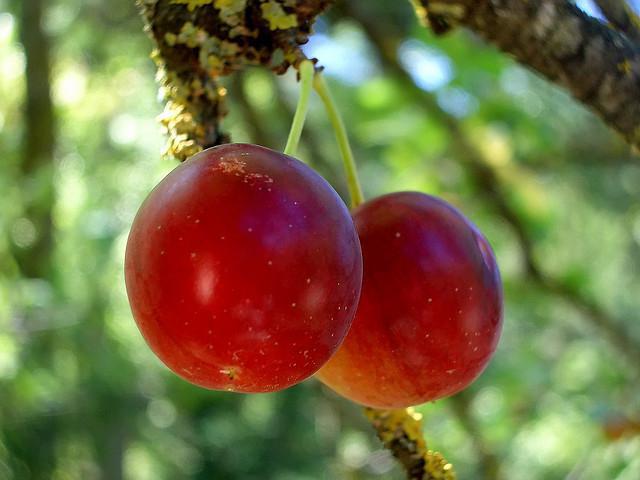

The skin of smooth fruits is dense, the lateral "seam" is practically invisible. The pulp is fibrous, loose, juicy. Has a light yellow color, sour-sweet taste and excellent aroma. The small bone is easily separated, which pleases those who like to make jam. The weight of one fruit reaches forty grams. There are many plums on the tree, especially in suitable weather. On the one hand, this is good, but on the other hand, it is bad. When there are a lot of ovaries, fruit ripening lags behind in terms of two weeks or more. They are small and sour.
general characteristics
Plum Manchzhurskaya beauty got its name from the eponymous Chinese province, where it comes from. She is also called the Chuya beauty. For the first time they started talking about this variety at the beginning of the last century. The exact information regarding when and by whom exactly the variety was bred has not been preserved. It is believed that the variety appeared as a result of crossing the following varieties:
- Simone;
- Chinese plum;
- Ussuriyskaya plum.
Culture spread on the territory of Russia closer to 1950. This happened thanks to a Russian botanist who lived at that time on the territory of Manchuria.Today, the Chui beauty plum can be found in the European part of Russia, Siberia and the Far East.
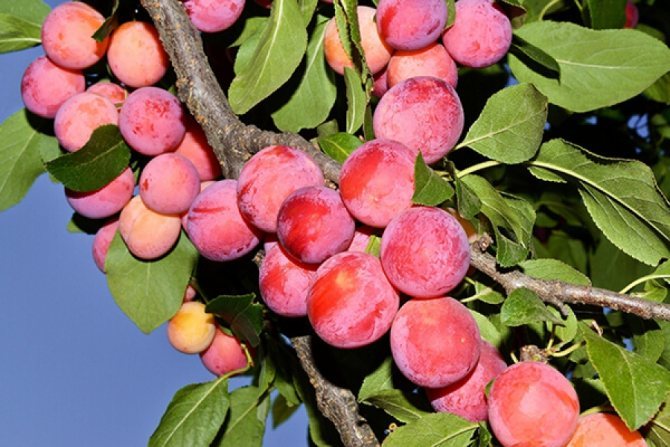

Manchurian Beauty Plum
Interesting. Such varieties as Kolkhoznitsa, Katerina and Zarya are descendants of the Manchurian Beauty. They were bred artificially, taking into account the climatic characteristics of those regions in which the planting of the culture was planned.
How the variety is pollinated
Self-infertility is characteristic of most varieties of Chinese plums. Its pollination has its own characteristics, they are associated with early (one and a half to two weeks earlier than the usual varieties) and short (only a few days) flowering periods. Home plum, blackthorn and blackthorn plum do not pollinate "Chinese women", but cherry plum does it successfully. For cross-pollination of the early-fruited, the Chinese plum Red Ball or any varieties of common and hybrid cherry plum (Russian plum) with similar flowering times are best suited.
The early-fruited itself is also an excellent pollinator for its "relatives". It is recommended to have at least three mutually pollinated varieties. Since cherry plum and Chinese plum are less common crops, neighbors may not have suitable pollinators. You can plant a Chinese plum in the crown of any of the varieties acceptable to taste and winter hardiness.
Video: features of plum pollination
Blue
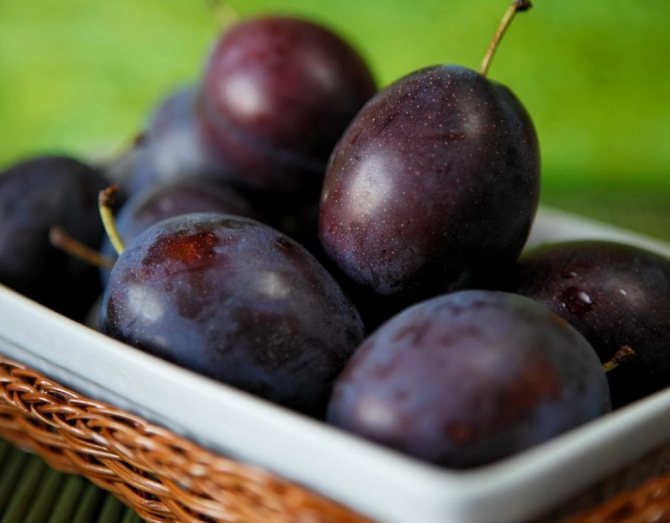

- The blue plum is the most famous and popular in our country.
- It has a huge number of varieties.
- They are united only by the fact that the fruits of all of them are covered with skins of different shades of blue, purple. Berries can be either round, elongated or any other shape.
- The mass, taste, size of the seed also vary greatly among representatives of different varieties, subspecies.
back to menu ↑
Characteristics of the fruits of the Chinese plum
The fruits of the best varieties weigh up to 120 grams and are similar in size to a large peach or apple. Their color is different: yellow, orange, purple, but in most cases - red. Some varieties have a fruit with bright red flesh, sweet spicy taste and peach aroma. The peel is weakly binding, strong, due to which the fruits are stored for a long time and do not deteriorate during transportation. The bone is grown in juicy pulp.
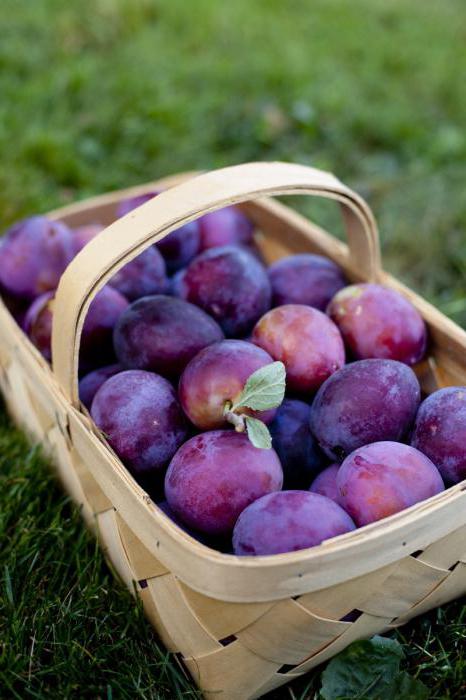

Chinese plum for industrial use has a crunchy pulp with a cartilaginous consistency, due to which it is well transported and stored for a long time at low temperatures. But even the best Chinese varieties taste worse than homemade plums.
Growing rules
It is best to plant plums in the spring when the weather is warm. These conditions will help young seedlings to take root. When the tree grows up, in the spring it is necessary to pay special attention to it - this is the time when delusion appears on the trunk.
Plum ripens early - by the end of August, the fruits ripen and begin to fall to the ground. Due to the skin of medium thickness, plums do not break on the ground and retain their appearance.
Especially it is worth paying attention to the soil and the place where the landing of the Manchurian beauty is planned. The soil should be loose, homogeneous and not acidic. The tree should not be planted too close to the water table on the sunny side of the yard. The plum takes root especially well on small mounds, which allows it to capture a greater amount of sunlight, there will be no accumulations of snow or moisture on the trunk, which cause root decay.
Pruning a young tree can be strictly up to 3 years old. At a later age, this can lead to death due to gum disease. It is not recommended to grow this type of plum alone, because it will not bear fruit. A few more plums should be planted at a distance of up to 3 m. During flowering, you cannot spray the plant with anything, it is also better not to water it.
Growing from a bone
You can grow a plum by planting a seedling, cutting, layering and even a fruit bone. Unlike planting seedlings, the seed must be planted in the fall.Before doing this, you need to carry out simple activities.
- Rinse the pit well, dry it warm or in the sun.
- Remove the seed from the shell and cover with warm water.
- The seeds remaining at the bottom are suitable for sowing.
- Dry the seed, put in a container with a substrate, close tightly and shake.
- Put in the refrigerator for 4-6 months, moisten the soil as necessary during this time.
- Plant in a flower pot with well-moisturized soil. Lay a layer of expanded clay or charcoal at the bottom of the flowerpot. It is worth immediately accustoming the plant to the soil in which it will grow. To do this, in a 2-3 liter pot, you need to put 2 parts of fertilized soil from the garden, in terms of peat and sand.
- Cover the pot with plastic and put it on the windowsill on the sunny side of the house.
These measures will help the Manchurian plum germinate faster. After the sprouts appear, they should be looked after in the same way as for the rest of the houseplants. It is not recommended to leave the pot in a draft.
Planting in soil
Plums should be planted away from other trees, but at a distance of at least 3 m from other types of plums. For the process to be successful, the following sequence should be followed:
- a couple of days before planting, mix the soil from the future pit with humus in a ratio of 1:10, and then put it back, leaving room for the seedling;
- the pit for planting the bone should be made deep, 0.6x0.6 m;
- before transplanting, water the soil in a pot and fill it in a hole;
- put hay, water-repellent fabric on top and wrap the crown with burlap.
You can do without planting in a pot and plant plum seeds in the garden right away in winter, and from April start caring for it as expected.
To plant a plum as a seedling, you need to dig a hole 50 cm deep and 70 cm in diameter 2 weeks before planting. After 2 weeks, you can start planting. The seedling must be straightened and covered with soil so that the root collar rises at least 4 cm above the ground.
Usually they cover it with earth from a hole mixed with humus, sand, potassium chloride, saltpeter, etc. After that, you need to water the plant abundantly with settled water.
"Red ball"
This type of Chinese plum is little known, and therefore is not popular in Russia. Although plum is unpretentious in cultivation and has many advantages. "Red ball" - a short tree with a spreading, but not dense crown. Long branches hang down. It has a smooth trunk of a light brown Chinese plum. The description of the variety has an interesting feature.
The roots have a horizontal system of structure, and not vertical, like most trees. They are deepened into the soil by 50 cm, and in width their area is occupied by the projection of the crown onto the ground. Mature trees have roots that extend five to seven meters deep.
The flowering tree has an unusual appearance: the leaves appear after the flowers fall. The decorative appearance does not last long, since the plum has a very short flowering period. Two to four flowers grow from one bud, which have five petals of white or pink hue. The whole tree is strewn with delicate flowers. But not every flower has a fruit set.
The leaves are elongated, and their edges are small denticles. The leaf plates are elongated, with a pronounced central vein. It seems that the leaf is concave, although its demise is bent outward. The leaves seem to form a bouquet.
Sissy
The Chinese plum tree of the Nezhenka variety grows up to 2.5 meters. Crown in the form of a ball. Shoots are straight, brownish brown. Lentils are placed at the level of the surface of the shoots, and the buds are shaped like an egg. The leaf has the shape of an elongated light green egg. The inflorescence has five flowers, and the corolla reaches up to 14 mm in diameter. The petals are white.
The fruits of the Nezhenka variety weigh up to 30 g, they are round in shape. The color is red. The pulp is yellow and tender. The taste is very juicy and melting.The variety has a table purpose and resistance to cracking. The fruits contain dry matter (13%), sugar (8%) and acids (2%).
Of the advantages of this variety, I would like to note the high yield and winter hardiness. However, there is a drawback: the fruits crumble when ripe.
Description of the plum "Oryol Dream"
Plum "Oryol Dream" description of the variety. IN kidney usually 3 - 4 flowers, tightly adhering to the branches of the crown, for which several decades ago the Chinese plum was also called "three-flowered plum".
In the first days of May, and blooms plum of this variety on May 10 - 14, this is a real decoration of the garden with an indescribable aroma. The harvest also pleases lovers.
Spreading crown has the shape of a pyramid. It is not too thick and is raised above the ground.
Bark flaky, brown, smooth and lighter on young shoots. Lentils are clearly visible on young shoots, they are narrow and do not protrude too much above the surface. The buds have a regular conical shape, the leaves are dark green, smooth and slightly curved downward, with notches.
Petiole - 1, 5 cm, with age spots. Flowers are very interesting: their petals are white, in contact with each other, and the stigma of the pistil 6 centimeters long protrudes slightly above the anther (stamens are about 5 centimeters long).
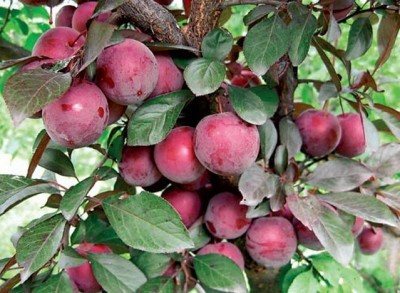

Cups of flowers similar to bells, the Chinese cherry on the branches of flowers bears fruit. The fruits of the Oryol Dream are round, about 35 millimeters in height, weighing just over 30 grams. The color of the fruit is very beautiful - brown with a violet glow and as if covered with a waxy coating.
Plum very tasty, their flesh is sourish - sweet, dense, fibrous, yellow and brown in color.
Photos of the plum "Orlovskaya Dream" are presented below:
What breeding methods are there?
The Chinese plum is propagated by bone or by grafting. The first option is only suitable for reproduction of the type species. In order to transfer varietal qualities to the tree, they resort to grafting propagation.
Breeding options:
- By the bone. When multiplying by a bone, ripe fruits that have fallen from a tree are selected. The seeds are separated from the caked fruits, the pulp is removed, dried on the street, and then taken to a dark place - to hatch. In the fall, the bones are planted in the ground, the planting is sprinkled on top with mulch.
- Vaccination. The survival rate with this reproduction is 50%. Vaccination options: from spring to late summer by cuttings;
- in early spring - for the bark;
- before the start of sap flow - into the split;
- in late autumn - a cuttings in the crown.
Characteristics of the fruits of the "Manchu beauty"
They come in medium to large sizes. Each fruit weighs up to fifteen grams, has a rounded shape and a flat base, the funnel of which is narrow and deep. The dense, juicy pulp has a yellow-green color and a loose structure. The skin of medium density has a dark burgundy color with a pronounced bloom of a bluish tint.
The size of the stone is average, the shape is oval with pointed ends, it is difficult to separate from the pulp. The Chinese plum, reviews of which are positive, is firmly attached to the stalk. Thanks to this, the fruit does not fall from the tree, even during strong winds.
Testimonials
Most gardeners with experience in growing Chinese plum speak positively about this fruit crop. Along with the taste and aroma of fruits, gardeners are attracted to the Chinese plum by its unique agrotechnical characteristics. But there are also remarks about the disadvantages. So, in particular, some gardeners noticed that the culture does not tolerate winters with thaws and may suffer from spring frosts.
★★★★★ Olga Sh., Moscow region. Alyonushka has been growing on the site for a long time. The fruits are fragrant and tasty, we eat with pleasure, make compotes and plum brandy. Interestingly, the size of the fruit varies. There are years when plums weigh 50-60 g, and there are also 30-40 g. But the tree bears fruit regularly, does not leave without a crop. There is only one problem - aphids. This attack haunts Alyonushka. Another minus - the bones are poorly separated. ★★★★★ Vladimir Ivanovich, Tver region I have two Chinese plums in the garden. When the temperature was minus 42 in one of the winters, their flower buds froze. The trees are beautiful and productive, do not require special care, pests bypass them. The early-growing plum produces large plums that look like peaches. The only drawbacks are the need for pollinators. Hide
Add your review
If you do not want to go without a crop, plant one of the varieties of Chinese plum in your garden. This crop has excellent agrotechnical characteristics, allowing it to be grown in the harshest conditions.
0
Harvesting and storage rules
It is necessary to harvest plums as they ripen, timely freeing the branches from already ripe fruits and thus helping to ripen new ones faster. Harvesting is carried out on a day without precipitation, in the afternoon or in the evening. It is best not to allow moisture to be present on the skins, as this will shorten the shelf life of the fruit. The fruits can be torn off by hand or cut with scissors. At the same time, the stalks should remain on the plums.
It is important that the person has less contact with the fetus. Since the damage to the wax coating on the skin leads to a decrease in the shelf life. Only whole, undamaged, firm fruits are suitable for storage. Soft, torn skin must be consumed the same day they are removed. The optimum temperature for storage is 0 ... + 5 ° С, humidity is 85%.
Check out the types of drains for drying.
Fruit can be stored in fruit and vegetable trays in the refrigerator or in the cellar. The shelf life is up to 2-3 months. True, there are varieties that can lie in cold conditions for no more than a month. So, today there are many varieties of Chinese plum that are suitable for growing in various regions, including those with harsh winters. Caring for them is simple. Even a beginner in horticulture can handle it.
Diseases
The early-growing plum has not bad, but not very high immunity to such diseases and insects:
- Clasterosporium disease. For prevention, it is enough to spray trees with a solution of ferrous sulfate at the rate of 300 g per 10 liters of water and 1% Bordeaux liquid.
- Fruit rot. In case of damage or as a prophylaxis, such drugs "Horus", "Azofos", "Abiga-peak" are used.
- Pests such as moth and aphids. The Iskra-Bio and Fitoverm preparations are effective against moth attacks. From aphids will help infusions of garlic, tobacco dust, celandine or tomato stepsons, as well as spraying with Kinmix, BI-58.
Important! Despite the fact that, according to the description of the characteristics of resistance to diseases of the early-fruiting plum, they are far from being up to par, in practice they are rarely manifested.
The early-growing plum is a great option for private cultivation. A rich harvest of tasty fruits, combined with undemanding care, attract more and more gardeners every year, despite the fact that the variety was bred a long time ago and during this time many new varieties have appeared.
Breeding history
This Chinese plum is really from the Middle Kingdom. The homeland of this amazing tree is the mountainous regions of Manchuria. In China, it is called a three-flowered or willow plum. The Chinese have been growing various varieties of this tree for several millennia. The fruits of the "Chinese" were eaten by the emperors - the tree occupied an honorable place in the imperial gardens.
In the 16-17th century, the Chinese plum appeared in Japan. The Japanese appreciated the splendor of the blossoming plum and the taste of its fruits. Before reaching Europe and Russia, the Chinese plum first came to the United States - it was brought there from Japan.
Russian breeders have spent a lot of time developing varieties adapted to Russian winters. At one time, I. Michurin crossed the Chinese plum with the home plum, trying to create varieties that combine frost resistance and pleasant taste.Modern varieties thrive in regions with harsh winters.
The abundant flowering of the Chinese plum does not guarantee a large harvest - it depends on the quality of pollination.
Characteristics of the variety
The description indicates that the plum of the Orlovskaya Dream variety was obtained after natural pollination of the varieties Alyonushka and Souvenir. At the end of 2005, it was included in the State Register of the Russian Federation.
Grows ideally in areas dominated by black soil. This variety belongs to self-fertile varieties, that is, fruiting does not depend on other pollinators.
If you want to increase yields, plant several adjacent species next to this tree. The growing season is short, only 80 days from the start of flowering.
Description of the tree
The description indicates that the crown of the tree is of medium density, pyramidal in shape. The height of the tree is 3 m. The old bark is brown, peeling. On young shoots that have just begun to grow, the bark is glossy, gray. Other characteristics of the tree:
- cone-shaped buds of medium size;
- leaves are large, oval, dark green;
- the surface of the leaf plate is smooth, small denticles are observed along the edges;
- the petiole grows up to 15 mm, small pigment spots can be seen on the surface;
- the petiole resembles a small bell;
- the flowers are white and the central pistil is pink.
Fetal appearance parameters
When considering the description of the plum variety Orlovskaya Dream, the following features of the fruit are noted:
- oval shape;
- fruit size 3.5 cm;
- plum weight 30–35 g;
- the surface is brown;
- violet wax bloom.
The bone is difficult to separate from the pulp. The taste is pleasant, sweet. The pulp is characterized by juiciness and firmness. The content of ascorbic acid in the composition is noted, which only improves the taste of the Orlovskaya dream plum. It is used to prepare delicious sweet desserts. You can also eat it fresh.
Characteristics of the plum Souvenir of the East
According to its characteristics, the Souvenir of the East stands out among other varieties of Chinese plum with a high yield and presentation of the fruit.
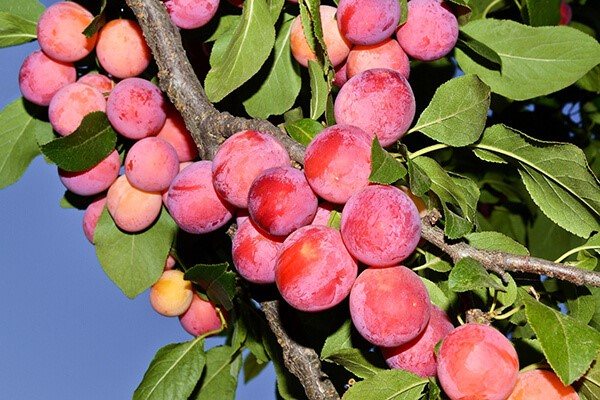

Drought resistance, frost resistance
Drought tolerance is average. Watering is necessary for trees during flowering and fruit formation. No less destructive for the culture is stagnation of moisture in the soil.
Plum is appreciated for its high winter hardiness. Spring thaws are the most dangerous for plums. The tree quickly leaves the dormant stage, which leads to podoprevanie bark. Therefore, in colder regions, it is recommended to plant the variety on more winter-hardy trees.
Plum pollinators Souvenir of the East
Plum Souvenir of the East does not bear fruit without a pollinator. It is best to use diploid cherry plum or Gigant plum for these purposes. Other varieties of plum that bloom early are also suitable.
The flowering of the variety occurs at the end of April - beginning of May. The shoots are strewn with flowers. The crop can be harvested in the middle of August.
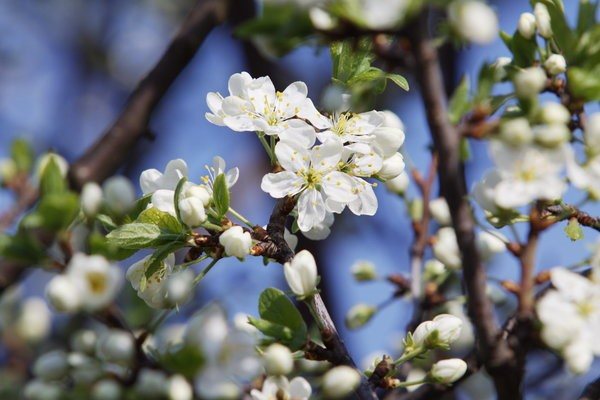

Productivity and fruiting
The variety is characterized by a high yield: 26–45 kg per tree. The fruits are collected in large clusters and ripen on bouquet branches. Plums grow singly on summer shoots.
Scope of berries
The fruits of the variety have a table purpose. It is recommended to use them fresh, process them into juice or jam. The variety is not suitable for canning, since the fruits are very soft.
Disease and pest resistance
The variety has a low resistance to clotterosporium disease. Preventive spraying and adherence to agricultural practices help protect the tree from diseases and pests.
Advantages and disadvantages of the variety
The main advantages of the Souvenir of the East variety:
- bright fruits of large size;
- high winter hardiness;
- decent productivity.
When growing a variety, its disadvantages are taken into account:
- podoprevanie plum;
- the need for pollinators.
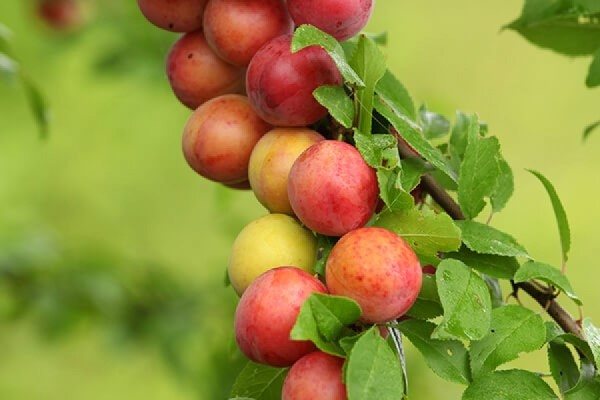

The best varieties
Of course, as in every fruit crop, plum has popular and not so popular varieties. They are chosen, as a rule, according to the comparative characteristics of the tree and fruits, as well as reviews of experienced gardeners. To understand in detail the best varieties, we will present a brief description of them.
Oryol dream
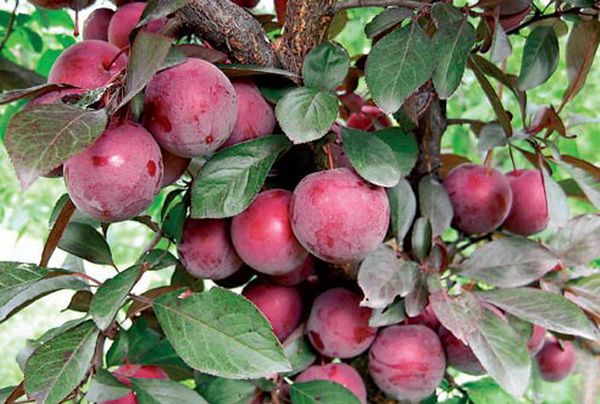

It is not for nothing that the tree received such a name, because the merits of this variety cannot be disputed. The Dream plum appeared quite recently, but has already gained confidence among gardeners. A low tree, about 2 m high, with a classic medium thickened spreading pyramidal crown and slightly raised shoots. Small size and early fruiting makes harvesting much easier. The bark on the trunk and branches is smooth, rich brown, the color of young shoots is closer to brown.
Plum Oryol Dream belongs to the early-growing varieties, begins to bear fruit in the third year after planting in open ground.
Yields are average, but can be higher with cross-pollination. The tree has a high degree of frost resistance, and cold and frost are not terrible not only for shoots, but also for buds. Therefore, it is necessary to cover the plant only in conditions of especially harsh winters. The tree is resistant to common fungal infections, clasterosporia.

